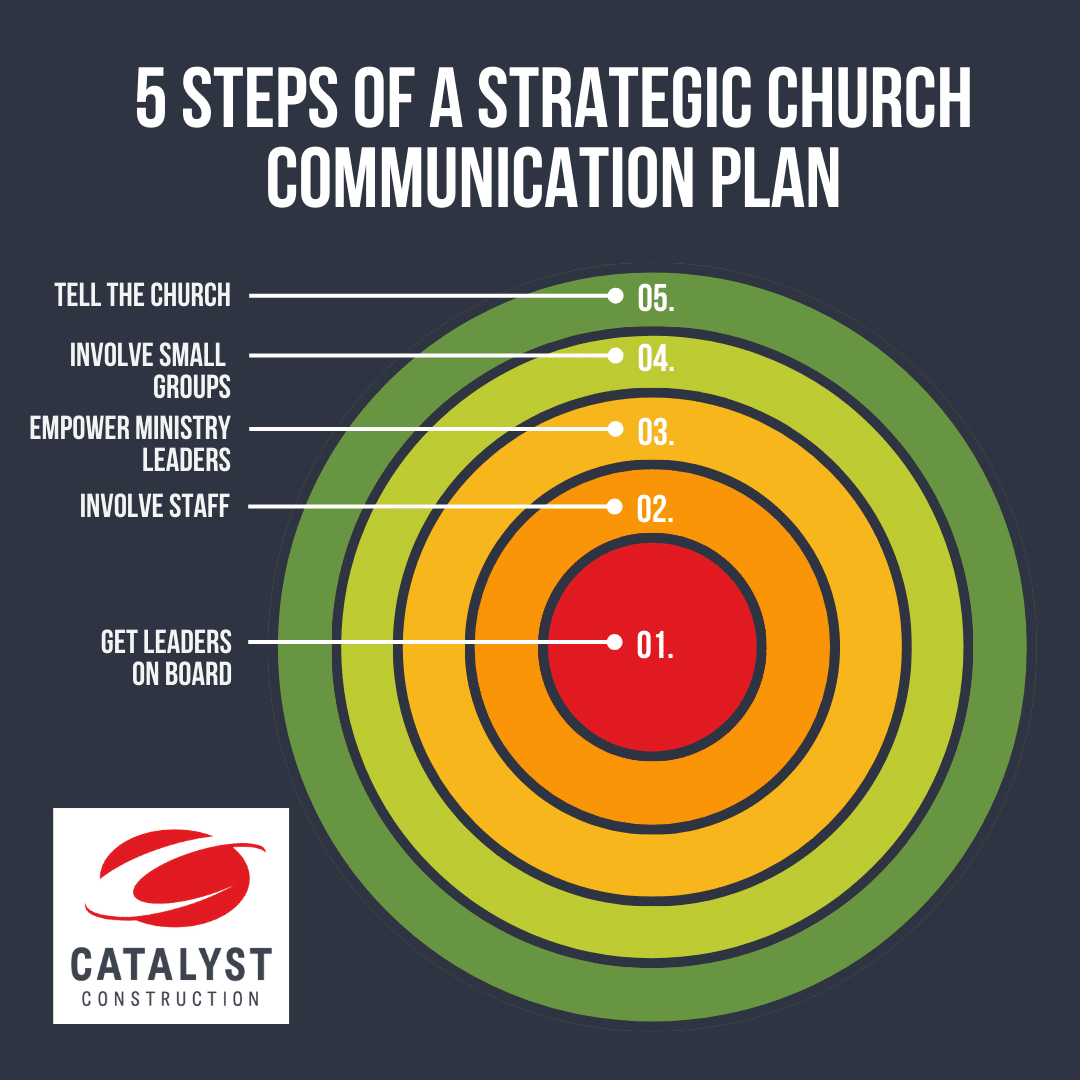Construction projects for churches are once-in-a-lifetime opportunities for most people. They are defining moments in the life of any congregation.
For better or worse.
When a church-building project is done well, momentum can be gained, joy enhanced, and mission mobilized. And that, for years to come!
Even when – not if – issues come up, because they will. That’s unavoidable. Things like inflation will change costs, weather can delay progress, and more.
Many issues are unpredictable and, therefore, unavoidable. However, we have seen several recurring problems threaten to derail the impact a church construction project can have.
Maximize Your Impact by Minimizing the Frustration of a Building Project
Few pastors will take on more than one building project during their careers. We complete 45 construction projects every year.
Having served as an executive pastor, I am personally invested in helping you maximize the impact your church construction project can have. I don’t want to see your building project stumble into the predictable pitfalls that many do.
4 Pitfalls in a Church Building Project
Like potholes on Wisconsin roads during the spring, so are pitfalls in construction projects. Here are four pitfalls you can see coming from a mile away – and how to avoid them.
1. Begining a Design Process With an Architect Without an Established Budget
If you begin your construction project by talking to a designer or architect without a budget, get ready for headaches and heartbreak.
Architects must make an incalculable number of decisions when designing a building. Each comes with a price tag. Most architects and designers charge by the hour. If you don’t have a clear vision and budget, each revision you need will cost you more.
Asking someone to design a building without a budget is like aiming for a target you can’t see. It will result in a building being over-designed and drifting beyond the project’s scope.
Most will draft a monument to their creativity if you ask an architect to design your building without boundaries. As they should!
You’ll receive beautiful, inspiring renderings – that you cannot afford to bring to reality.
Why?
You’ll take the renderings to a contractor, and they’ll put a price tag on the project. Then, you must determine if you can foot the bill.
When you can’t, you must determine what to cut and who to disappoint. Many people will have already seen the renderings and have gotten their hopes up, believing this beautiful building will be theirs to enjoy. And that will cause headaches and heartache. The project will get delayed before a shovel can even break ground.
Questions You Can Ask to Avoid this Pitfall
- Clarify the win: What problem will your building project solve? What is the mission, vision, and purpose behind the building project?
- Define the budget. How much can you raise? How much church debt should you incur? What assets are available?
- Determine priorities. How much money – or what percentage of the budget – will be assigned to each aspect of the project? Why?
Answering these questions will help you avoid many pitfalls.
2. Thinking the Building Planning Must be Completed Sequentially
Do you know the difference between linear and lateral thinking? Linear is “this then that.” Lateral is “this and that.”
Leaders often mistakenly approach building projects with linear, sequential thinking. Some aspects of the project require a specific order. Like setting a budget before bringing in an architect.
Many aspects of building projects for churches can – and should – be done simultaneously, not sequentially.
Let’s stick with the architect example. While you’re setting your budget, you can also research architects and get on their schedule for a consultation.
Or consider preparing to host a Christmas dinner gathering. Once one portion of the meal goes in the oven, you start working on another.
As the #1 church builder in Wisconsin that’s the most cost and time effective way we have found to navigate a building project for your church. Think in terms of overlapping phases instead of a sequential checklist.
Church Construction Phases to Enact Simultaneously
Implement the following phases simultaneously and maximize your efficiency.
- Design Phase: Determine the win, define the budget, and involve the professionals needed to get the project to the finish line.
- Financial Phase: Contact lenders to secure financing and implement a capital campaign.
- Programming Design Phase: The initial discussions with the Architect to determine the use, space, and basic design.
Each respective phase includes multiple components. Many of which can – and should – overlap in the schedule. When they do, you’ll keep your project moving forward.
The key is having a completed timeline with designated milestones – for each phase. This will ensure no aspect of your building project will jump out too far in front of another.
3. Not Having a Clear Decision-Making Process for Your Church Building Project
Organizations must find the sweet spot for making decisions. It’s somewhere between unclear and convoluted. Decisions must be made whenever multiple people are involved, and the process for doing so must be clear.
You don’t want a dictator micromanaging every decision for every aspect of the project. But you also must avoid obtaining consensus for every decision. No one wants to get bogged down in meetings about the next meeting.
Understand the role of a Steering Committee
We have found that church building projects experience the most momentum and least friction when a small, qualified, trusted team is responsible for making final decisions strictly for the building project.
This team, often called a “steering committee,” should be no less than three people but no more than five. They should be empowered to make decisions within the scope of the project.
Multiple committees or teams will most likely need to be created to complete the project. Some common committees include:
- Technical & AV
- Systems
- Ministries directly involved with the project
- Finance and fundraising
- Educational
- Worship space
- Design
- Communications team
The above list isn’t comprehensive or required. You may not need them all or may include a few teams that aren’t mentioned.
Regardless, each committee should have one – and only one – person who reports to the steering committee.
This limits communication gaps, mitigates relational triangulation, and provides clear understanding for everyone involved.
The steering committee keeps the big picture in mind. Other teams must focus on their specific component of the big picture.
Therefore, the steering committee must be empowered to make decisions for the whole. They must balance each, individual team’s priorities with the overall vision for the church building project.
4. Failing to Communicate During Your Building Project
Communication is essential in every aspect of a church construction project. What you need to prioritize here is not communication in general, but a strategic communication plan specifically.
Here are some pits people fall into when communicating about their construction project.
- Communicate too early: If an aspect of the build hasn’t been confirmed, you can’t promise it will be. Further, key leaders should never be “surprised” to find out critical information “through the grapevine.”
- Share incorrect Information: There is no harm in saying, “I’m not sure,” or, “Let me get back to you on that.” But much damage can be done when speaking about dates or details incorrectly.
- Communicate unclear information: This is different than being incorrect. It’s communication that’s confusing or allows for many interpretations. During defining, high-stakes moments, people need clarity.
- Poor timing: You must determine who knows what and when. If not, feelings will be hurt, opportunities will be lost, and momentum will be thwarted.
Avoid the Communication Pit With A Strategic Communication Plan
Develop and implement a strategic communication plan for your church. This will clearly establish a path for the right people to receive the right information in the right order.

If you avoid these common communication pitfalls and implement a strategic communication process, you’ll watch vision become reality right before your eyes!
Catalyst Construction Can Guide You Through the Pitfalls of a Construction Project
Setbacks and detours are impossible to avoid in a construction project. That makes it all the more important to plan for the issues you know are coming.
We’ve seen too many churches squander opportunities, create headaches and heartaches, and struggle through what ought to be a season of enhanced impact.
You don’t have to settle for this. We can help. Since 2004, we’ve been guiding churches across the finish line of their construction projects.
Reach out today for a free consultation and get on the path to success.





